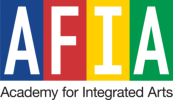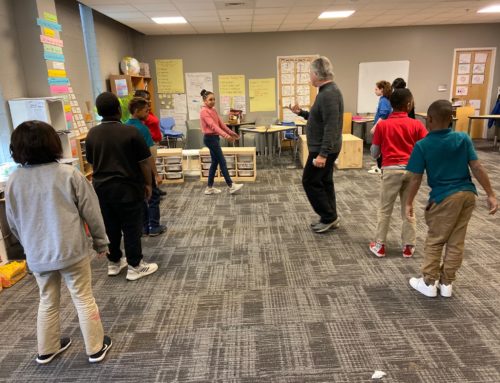In honor of National Arts in Education Week, I am finally revising and sharing a blog entry that I drafted over the summer. Happy Arts in Education Week!
For two days in July, I had the great opportunity to spend time with other educators across the state of Missouri who are integrating art across the curriculum and attend the Center of Creative Arts (COCA) Summer Institute for Arts Integration in St. Louis.
On the train ride back Kansas City, I was scrolling through my Facebook feed and came across an article posted by Turnaround Arts about Daveed Diggs, a cast member in the musical Hamilton. In the article, he is quoted: “the discovery of arts education in my life sort of saved my life….As a kid, you don’t have a ton of spaces where you are honored, where what you think is honored, and what you say is revered.”
Reading this literally gave me chills – and that is the thing about art – it can cause an emotional and physical reaction. I have been inspired by and have learned from countless students. A few years ago, one of my former 5th graders reached out to me via Facebook. He is now an adult with a couple of kids of his own. When I heard from him, I couldn’t wait to tell him that I had been reading his “Where I am From” poem, written in 1998, to preservice and inservice teachers for years. The work of a 5thgrader has inspired countless young teachers to teach writing and serve as model as they wrote their own poetry – and I often hear the question: Did a 5th grader really write that? Yes, indeed. He did. Because this is the thing – our students are talented, creative, smart and they care.
Our students want to create – whether that is through painting, drawing, dancing, writing – they want to share with others and learn. It’s on us – the adults – to create a learning environment that is safe, culturally relevant, allows for risk-taking, and provides many entry points into learning. Very few of us enjoy just listening to one person deliver knowledge to us. Very few of us enjoy filling out worksheets that are disconnected from our lives. Very few us learn when we are asked to be quiet. Very few of us learn from solving manufactured problems generated by somebody we don’t know.
On that train ride home, I reflected on my learning at the COCA workshop. If you are an educator, I highly recommend it. The presenters are grounded in constructivism and they connect practice to theory – so educators gain practical ideas that can be implemented across content and grades, while also learning the philosophical frame behind the what through engaging in hands-on activities.
In the first session, Sean Layne of Focus 5 laid the foundation for the week by engaging our group in a thought provoking discussion about what arts integration actually is – taking us through an exercise to think deeply about the Kennedy’s Center’s definition:
Arts integration is an approach to teaching in which students construct and demonstrate understanding through an art form. Students engage in a creative process which connects an art form and another subject area and meets evolving objectives in both.
I’ve shared this definition many times as I take visitors through AFIA, explaining that we believe that the process of engaging in art is just as important (and possibly more important) than the final product. We believe children learn more deeply when they are able to take in information through art, analyzing paintings, poetry, songs, dances, etc and when they are able to share what they have learned through art – choreographing a dance, creating a mural, writing and performing a play, etc.
Through arts integration we honor our students. And they deserve to be honored and heard. And if we do that, not only will our students engage in meaningful learning that they will remember, but we will also learn a lot more than we will ever teach.


Leave A Comment
You must be logged in to post a comment.